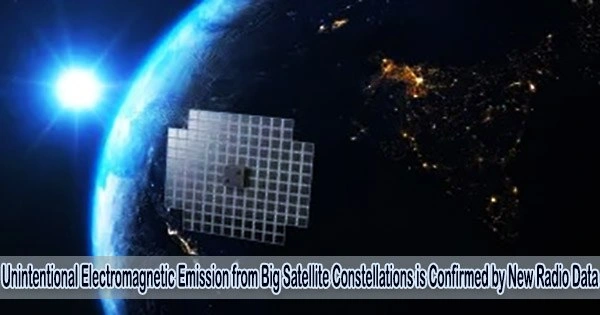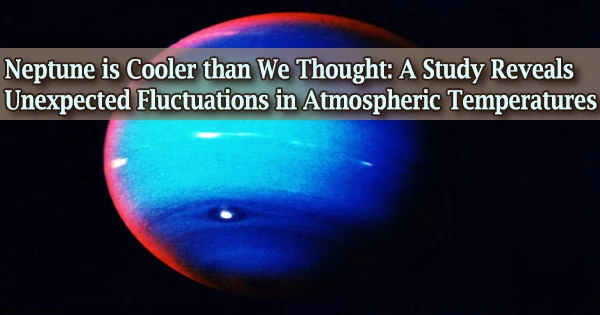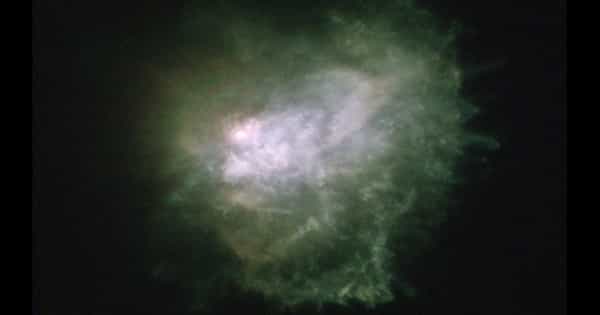The Low Frequency Array (LOFAR) telescope was used by researchers from a number of top academic institutions, including the Max Planck Institute for Radio Astronomy in Bonn, Germany, to observe 68 of SpaceX’s satellites. According to the authors, they found “unintended electromagnetic radiation” coming from the onboard circuitry.
This is distinct from communications transmissions, which up until this point had been the main area of interest for radio astronomers. Astronomical studies could be impacted by the unwanted radiation. The researchers exhort regulators and satellite operators to take into account this effect on radio astronomy in both the creation of spacecraft and the regulatory procedure.
The research is published in the journal Astronomy & Astrophysics.
A new phenomenon in low Earth orbit
Astronomers have always had to contend with man-made radio frequencies that can outshine astronomical sources while listening for extremely faint signals from the universe. As a result, the majority of radio telescopes are constructed in areas with unique radio safeguards against interference from the ground. Some of them are even found in areas designated as radio quiet zones by the relevant national authorities.
Large satellite constellations are now being used for Earth observation or broadband internet access thanks to recent technological advancements. They bring with them a completely new complexity. Any radio telescope will always have a large number of satellites broadcasting signals in its field of vision because there are thousands of them in low Earth orbit.
It has been anticipated that communications transmissions to and from the Earth from satellite constellations will be the main cause for concern. Additional non-communication sources have been found, which is novel and calls for more research.
The present study highlights an example of the various channels of how technology development may have unforeseen side effects on astronomy. With SpaceX setting an example, we are now hoping for the broad support from the whole satellite industry and regulators.
Professor Michael Kramer
“This study represents the latest effort to better understand satellite constellations’ impact on radio astronomy,” said lead author Federico Di Vruno. “Previous workshops on Dark and Quiet Skies theorized about this radiation, our observations confirm it is measurable.”
Di Vruno is the co-director of the International Astronomical Union’s Center for the Protection of the Dark and Quiet Sky from Satellite Constellation Interference (IAU CPS) and also spectrum manager for the SKA Observatory (SKAO). The other authors are all active members of the CPS.
Existing and planned constellations
Since SpaceX had the most satellites in orbit at the time of the observations more than 2,000 Di Vruno and his co-authors initially concentrated on SpaceX satellites. They understand, though, that there are other companies that run massive satellite constellations besides SpaceX.
The scientists predict that other low-Earth-orbiting satellites will emit comparable unwanted emissions, and more measurement work is already slated to concentrate on different satellite constellations.
“With LOFAR, we detected radiation between 110 and 188 MHz from 47 out of the 68 satellites that were observed. This frequency range includes a protected band between 150.05 and 153 MHz specifically allocated to radio astronomy by the International Telecommunications Union (ITU),” says co-author Cees Bassa from ASTRON, the Netherlands Institute for Radio Astronomy.
Despite this, SpaceX is not breaking any laws because there are no international laws governing this type of radiation for satellites. To prevent one device from interfering with another one nearby, tight regulations are placed on terrestrial equipment.
The authors also performed simulations of this effect from several satellite constellations. “Our simulations show that the larger the constellation, the more important this effect becomes as the radiation from all satellites adds up. This makes us not only worried about the existing constellations, but even more about the planned ones. And also about the absence of clear regulation that protects the radio astronomy bands from unintended radiation,” says co-author Benjamin Winkel from the Max Planck Institute for Radio Astronomy (MPIfR) in Germany.
Increased collaboration with satellite operators is key
The corporation has offered to continue in good faith discussing potential ways to mitigate any negative consequences to astronomy. The authors are in frequent contact with SpaceX. SpaceX has already made modifications to its upcoming satellite generation as part of design iterations that could lessen the effect of these unexpected emissions on significant astronomical endeavors.
Co-author Gyula Józsa (also MPIfR and Rhodes University in South Africa) states, “We believe that the early recognition of this situation gives astronomy and large constellation operators an opportunity to work together on technical mitigations pro-actively, in parallel to the necessary discussions to develop suitable regulations.”
“The present study highlights an example of the various channels of how technology development may have unforeseen side effects on astronomy,” concludes Prof. Michael Kramer, Director at the MPIfR and President of the Astronomische Gesellschaft in Germany. He distinctly welcomes SpaceX’s collaborative approach. “With SpaceX setting an example, we are now hoping for the broad support from the whole satellite industry and regulators.”















